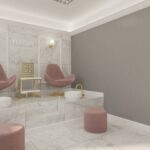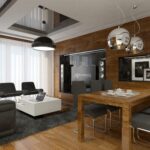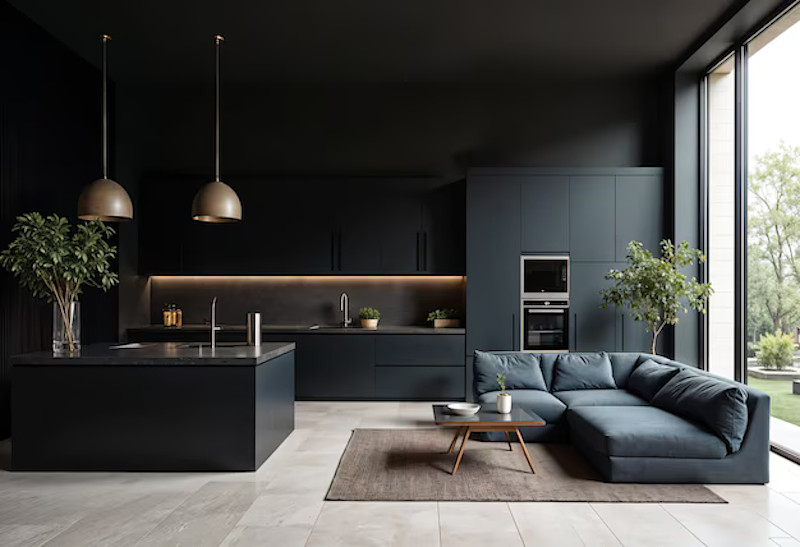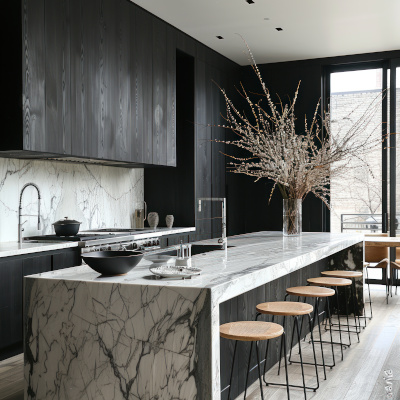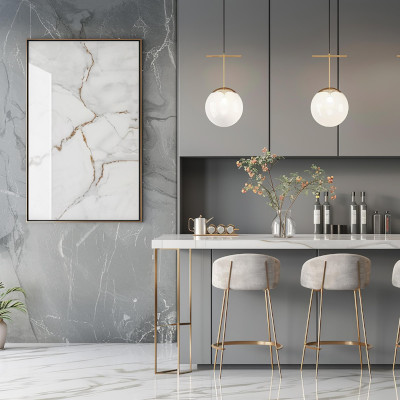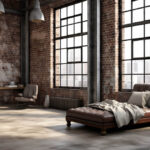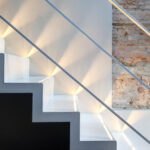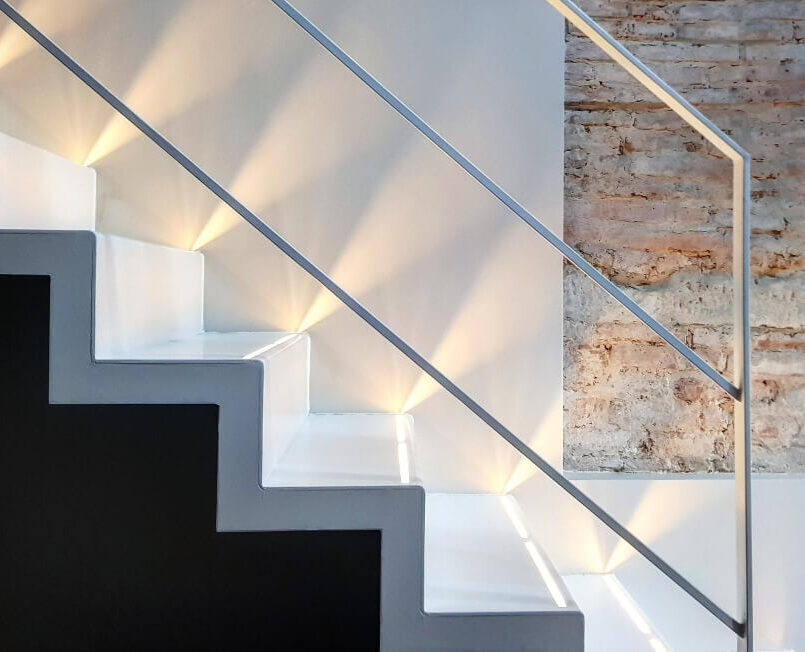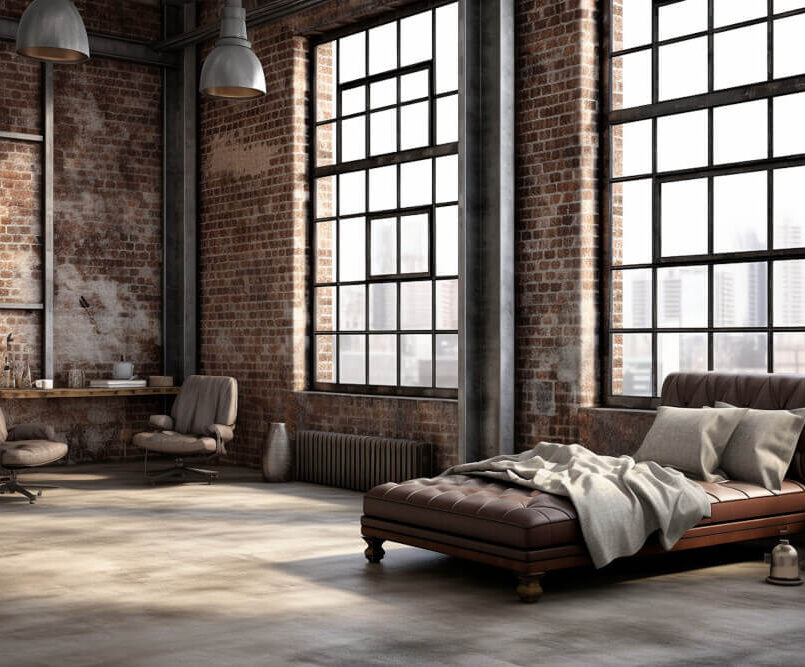Principles of kitchen interior design
The kitchen is a place where, in addition to furniture, there must be many functional devices and plenty of storage space. Good planning can turn even a small room into your dream kitchen.
Kitchen designs must take into account kitchen ergonomics. These kitchen design principles should be applied regardless of our individual preferences and habits. Here is what you need to pay the most attention to when developing a kitchen design.
1. Match your kitchen to your lifestyle
Before you start designing, be sure to analyze what your needs are for the new kitchen. How many people live with you? How much time do you spend in the kitchen? What does your cooking look like? Do you mainly use ready-made products or do you try to cook everything yourself? Do you usually eat meals in the kitchen or another part of the house?
2. Functional arrangement of devices
Kitchen design requires planning the working triangle, i.e., the right arrangement of the fridge, sink, and stove. Usually, a kitchen design works best when the basic zones are set based on the order of activities performed during food preparation: storage (fridge, pantry), washing and preparation (sink and countertops), and cooking (stove, oven). Creating a logical layout will help avoid unnecessary walking around in circles in the future.
3. Maintain appropriate distances between kitchen lines
Contrary to appearances, looser in the kitchen does not always mean better. If we have a spacious kitchen, in which the countertops are only against the walls, there will be unused space in the middle, and we will unnecessarily cover additional meters during everyday kitchen work. It is worth considering a device in the middle of the kitchen island. Even a small one will be very helpful as an additional countertop for work or a place to put dishes. Of course, too tight an arrangement of devices is also impractical and inconvenient.
4. Choose the right heights for your worktops
Different countertop heights are for standing work, different ones for sitting work, and still different ones for buffet situations (with high bar tables). Let’s follow the tried and tested rules, but let’s not be afraid to modify them sometimes. Taller people should add a few centimetres to the standard countertop heights, and shorter people should feel free to subtract them. There is nothing more tiring than working at a countertop of an inappropriate height. Let’s adjust the depth of the worktops. If we have a small room to use, we can stick to the standard width of 60 cm. However, if we do not have to watch every centimeter, it is worth adding at least 10 cm.
5. Place for a fridge
Tall refrigerators are usually placed at the edge of the kitchen, most often in the corner of the room. When designing a kitchen, however, make sure that the open refrigerator door does not interfere with the passageway in order to ensure free access to its interior. A section of the counter should also be planned near the refrigerator for putting away food products taken out of it. Usually, even in very unfavourable conditions, you can significantly increase the functionality of the kitchen with seemingly minor procedures.
6. Kitchen furniture and finishing materials
We should be very careful when choosing materials for finishing our kitchen. In addition to aesthetic values, we should also look at them from a practical perspective. It is better to choose furniture made of materials that are resistant to abrasion and that limit dirt adhesion as much as possible. In this case, stone countertops work well, not soft wooden ones, which are susceptible to scratches. Let’s not skimp on furniture fittings – there is nothing more irritating than loudly working and not closing drawers or falling doors. It is worth using drawers in a row of standing cabinets, not hinged cabinets. Then you do not have to bend down to take something out of such a cabinet. Cargo cabinets, in which you can conveniently store food, are also a very good solution.
7. Style and aesthetics
The designed kitchen should maintain consistency with the rest of the house in order to harmonize with the design and atmosphere of the entire apartment, creating one well-thought-out whole. The colors of the kitchen should refer to the colors used in the dining room and living room. Let’s try to look at our interiors as a whole and choose individual elements so that they look good together, not just each separately.
8. Lighting
The arrangement of lighting points should be planned in such a way as to optimally illuminate work areas, while avoiding shadowing by the person using the kitchen.
Let’s take care of the variety of light sources. Proper lighting is crucial for the functionality of the kitchen. It is important to combine general lighting, task lighting (e.g. under-cabinet lighting) and decorative lighting, while creating a warm and friendly atmosphere.
9. Household appliances
When choosing household appliances, it is important that they are not only functional, but also aesthetically fit into the overall kitchen design. Hide appliances such as dishwashers or refrigerators behind cabinet fronts. This helps maintain the coherence and elegance of the space. When planning the arrangement of appliances, it is worth paying attention to the ergonomic arrangement of the most frequently used devices in such a way that their use is as comfortable and effective as possible.
Modern household appliances offer a number of functions that can facilitate everyday duties and contribute to energy savings. When choosing equipment, it is worth paying attention to its energy class, noise level, as well as additional functions, such as ecological programs in dishwashers or quick freezing in freezers. These technologies not only help in everyday activities, but also contribute to reducing energy bills and have a positive impact on the environment.
10. Choose elegant accessories
In the kitchen, in addition to large household appliances, we also need small devices and many accessories. When choosing kitchen accessories that we intend to keep on top, it is worth ensuring that they are not only functional, but also elegant in appearance. This will help you avoid the impression of a mess in the kitchen and make cleaning easier for yourself, without having to hide everything in cabinets and drawers. Remember, practical accessories can also be decorative.


